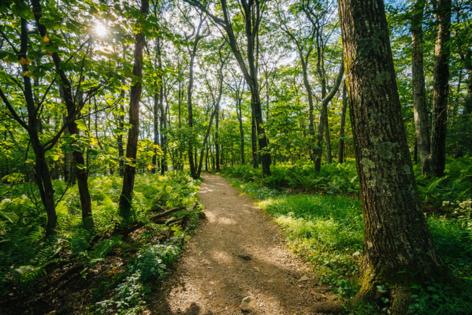Flightless grasshopper thought to be extinct is rediscovered in Virginia 80 years later
Published in Science & Technology News
Zoologist Andrew Rapp spent four hours hunched over looking through brush and scouring the short grass on the side of the road until he locked eyes with a creature once believed to be extinct.
He had to be careful not to scare it away, so he crept up to it, prepared his net and swung.
In doing so, Rapp officially documented a rare Appalachian grasshopper not seen for nearly 80 years.
“The day that I ended up finding it, it was just like, all right, I’m going to this location, I’m staying the whole day, boom or bust, see if we can get this thing,” he told McClatchy News on Feb. 12.
Rapp embarked on a mission to find the grasshopper starting in the summer, pairing it with his work as a zoologist for the National Heritage Program with the Virginia Department of Conservation and Recreation.
The Virginia Department of Conservation and Recreation shared news of Rapp’s finding in January.
The specimen Rapp caught was an adult female he estimated to be about an inch to an inch and a half long. According to the state agency, the species has “impressive camouflage” and was only ever documented in five counties in Virginia, as well as in West Virginia and Pennsylvania.
But it dropped off the historical record for decades, until some believed it had disappeared entirely.
In 2007, one scientist wrote on NatureServe, “Probably no living person has any field experience with this species. For now it is assumed that if it still does exist it probably occurs in large mountain pitch pine-scrub oak barrens.”
Rapp said he became interested in grasshoppers in 2020 and started doing more research on Appalachia hebardi, only to learn it was listed as possibly extinct. But he said the species had been reported through unofficial channels on citizen science pages such as iNaturalist, making him hopeful he could find one himself.
“I visited all of our known locations in the state,” he said. “It’s cool to see a lot of those other habitats, get a better understanding of what the species might need, and then to finally see it was very rewarding.”
On nearly his last site, he found what he was looking for in a pile of gravel on the side of the road in Augusta County.
Other grasshoppers he saw that day had hopped away, so it was a “moment of extreme stress” before he landed it in his net. Then he went through the process of comparing it to a historical key for the species.
“I wanted to be thorough, so I went through that key slowly, methodically, checking length of this and that, shapes, wing structures, and eventually landed on and confirmed that it was an Appalachia hebardi,” he recounted.
Rapp said he suspects a couple reasons why the grasshopper wasn’t seen for so long. One is that the landscape has changed and mature forests have taken the place of more open areas the species prefers. And another has to do with being in the right place at the right time.
“I think that there are few people looking in the right habitat,” he said. “And I’m not saying that it’s common by any means. It’s definitely not. It’s very restricted in its range, but I think that there were just not enough surveys in the right particular habitat, the right time of year.”
Rapp hopes his find might reinvigorate conversations about the species, which could potentially lead to further confirmed identifications in the other two states of their historic range.
“It’s nice to be able to be here and be able to talk to people that can make a difference if this does turn out to be a very rare species that needs protection,” Rapp said.
Augusta County is in the Shenandoah Valley on the western border of Virginia.
_______
©2025 The Charlotte Observer. Visit charlotteobserver.com. Distributed by Tribune Content Agency, LLC.







Comments